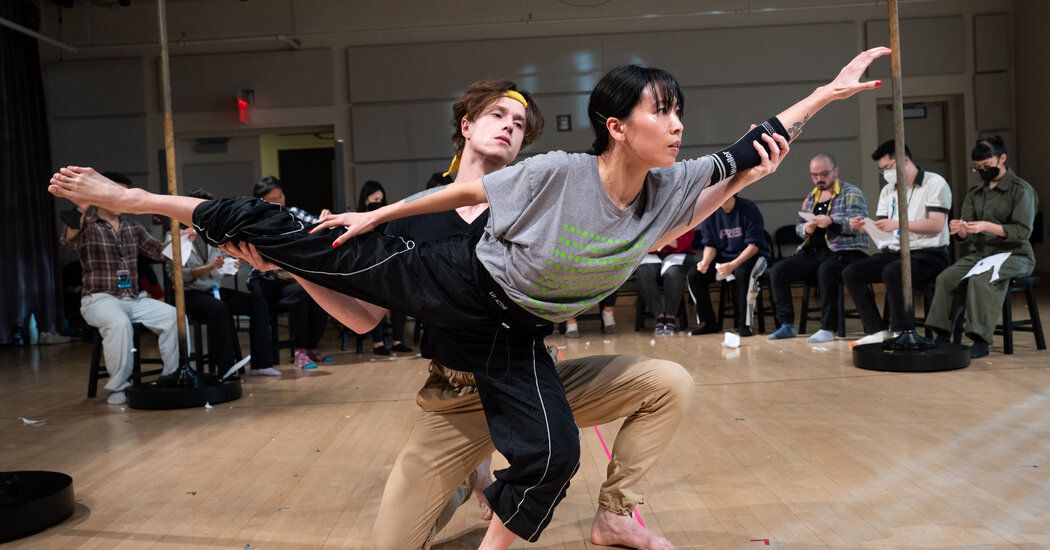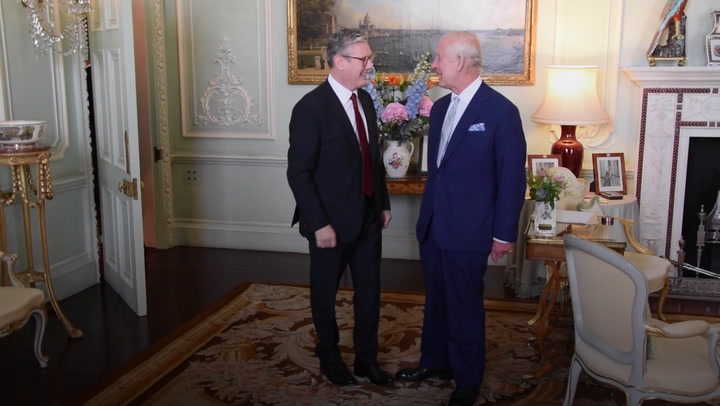In “Angel Island,” a staged oratorio about the anguish and isolation of Chinese detainees at the Angel Island Immigration Station in California, a chorus recites a poem about tyranny and misfortune.
“Like a stray dog forced to be confined, like a pig trapped in a bamboo cage, our spirits are lost in this winter prison,” they sing in Chinese. “We are worse than horses and cattle. Our tears shed on a freezing day.”
The poem is one of more than 200 inscribed on the walls of the Angel Island barracks in San Francisco Bay, where hundreds of thousands of people, mostly from China and Japan, were interrogated and held – sometimes for months or even years – while trying to enter the United States in the first part of the 20th century. Their heartbreaking stories form the emotional core of “Angel Island,” by the Chinese composer Huang Ruo, which premieres this month in New York at the Brooklyn Academy of Music, in a staging that is part of the opera and festival. Prototype theater. .
The production, directed by Matthew Ozawa and featuring the Del Sol Quartet and members of the Trinity Wall Street Choir, sheds light on life on Angel Island, the port of entry for many Asian immigrants from 1910 to 1940, whose punishing atmosphere contrasted to the most welcoming spirit of Ellis Island.
The oratorio also addresses the legacy of injustice and discrimination against people of Asian descent in the United States, weaving together historical events, including the 1871 massacre of Chinese residents in Los Angeles and the Chinese Exclusion Act of 1882, which banned the immigration of laborers. from China.
Huang described “Angel Island” as activist art and said he wanted to “give people a history that they didn’t learn in school.”
“This is not just a Chinese-American story,” he said. “This is an American story.”
The oratorio, which premiered on Angel Island in 2021, comes to the stage at a time of heightened concern about the treatment of Asians and Asian Americans in the United States, following the wave of violence against people of Asian descent during the early years of the coronavirus pandemic.
“Angel Island” hints at parallels between the past and present, highlighting, for example, racist depictions of Asians as disease carriers in the late 19th century, a precursor to the xenophobia of the pandemic and the use of the label “virus.” Chinese” to describe Covid-19. 19.
In Ozawa’s staging, Jie-Hung dancer Connie Shiau plays a modern woman who discovers artifacts that explain her great-grandmother’s immigration to the United States. Through film and movement, she immerses herself in the world of her ancestors.
Ozawa, who is Japanese-American, said participating in “Angel Island,” which features a largely Asian-American cast and creative team, was difficult because of the rawness of the story. But the work could also be uplifting.
“It is painful to be reminded of racism, prejudice and exclusion, but at the same time it is very cathartic to be open to it and allow ourselves to feel what our ancestors felt and know that we are not alone,” she said. “We are actually part of a much bigger story that is full of hope, redemption and the power to change things.”
Huang and the San Francisco-based Del Sol Quartet began working on “Angel Island” in 2017, when they received a $150,000 grant from the Hewlett Foundation to create an oratorio about detainees. The immigrants, who came from China, Japan, India, Russia and elsewhere, faced overcrowded and unsanitary conditions on Angel Island. They were typically detained for weeks or months, although some were detained for up to two years. In the end, many were deported.
Charlton Lee, a Chinese-American violist with the quartet, had proposed the idea of an Angel Island project to Huang, who had previously collaborated with Del Sol, including on chamber performances of Huang’s music before the American premiere of his first. opera, “Dr. . Sun Yat-sen” in 2014. Lee, who had been impressed by Huang’s ability to set Chinese texts to music, said he thought the story of Angel Island had been neglected.
“We look at Angel Island all the time, it’s in the middle of the bay, but people don’t know about the detention center,” he said. “They don’t know the plight of these immigrants who were trying to come here, start a new life, and they were just stuck.”
In 2018, Huang and the quartet visited the island, now a state park. They examined poems, written in classical Chinese, in which detainees described feelings of anger, fear and nostalgia. They began improvising inside the barracks, with members of the quartet accompanying Huang as she sang a tune in Chinese.
“Being in that place was haunting,” he said, “but it was also moving to bring something alive to a place that was so dead.”
Huang selected a few poems to set to music: “The Seascape,” “When We Bade Farewell,” and “Buried Beneath Clay and Earth.” He added historical writings to be read aloud to the accompaniment of the quartet. These included a discussion of the Los Angeles Massacre of 1871, when a mob shot or hanged at least 18 Chinese residents; a list of questions used by American immigration officials in the late 19th century to assess whether Asian women were prostitutes; and an 1873 essay by Henry Josiah West warning of a “Chinese invasion.”
“The question,” West wrote, “will we submit to the growth of this pagan Republic of China?”
In 2021, after a one-year delay caused by the pandemic, Huang and the Del Sol Quartet returned to Angel Island for the premiere.
Lee said he found it jarring to listen to the music in the barracks, which he considered dark and sinister.
“It seemed like spirits were coming out of the walls,” he said. “It’s almost like we performed some kind of ritual and suddenly these people who had suffered were able to smile.”
Since then, “Angel Island” has been performed several more times, including in Berkeley, California, Washington and Singapore.
Huang recently expanded the piece, adding another poem, “The Ocean Surrounds a Lonely Peak,” and a movement about Fang Lang, a Chinese survivor of the Titanic shipwreck who was banned from entering the United States because of the Exclusion Act.
The New York production is the first full staging of “Angel Island.” Dancers appear everywhere and cinema plays an important role, with historical images and videos of Angel Island, filmed by Bill Morrison, projected on the screens. Choir members imitate the carving of Chinese characters and poems.
“This is really the manifestation of a community,” Ozawa said. “You want the audience to be completely immersed and experience a sense of hypnotic ritualism.”
And he added that he would like the story to resonate with a broader audience.
“Angel Island still lives and breathes inside the bodies of so many Asian Americans,” he said. “My true hope is that we all remember, connect and learn from our personal heritage, our past, our ancestors’ experience coming to America, but also feel empowered by the material to ignite discourse, empathy and understanding towards those who have just arrived in the country. “
The detainees’ poems remain at the center of “Angel Island” and give the work its spiritual foundation.
Huang, who came to the United States as a student in the 1990s and stopped first in San Francisco, said he could relate to many of the poems.
“There is the same feeling of what it means to leave your family behind,” he said, “and arrive at a place hoping for a new life and not knowing what awaits you.”
At the end of “Angel Island,” the choir members leave the stage and surround the audience, a gesture intended to help them feel part of the detainee community.
The final poem of the oratorio describes leaving Angel Island and preparing to return home. He talks about the jingwei, a mythological bird that tries to fill the sea with twigs and stones:
For half a year they have put obstacles in my way,
Melancholy and hatred accumulate on my face.
Now that I must return to my country,
I have labored in vain like the jingwei bird.












